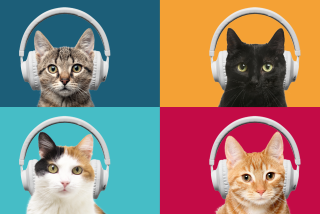Napster’s new target
- Share via
SEVEN YEARS AGO, NAPSTER shook the foundations of the music industry by providing a virtually unlimited supply of free music over the Internet. Now, the company that bought the Napster brand name at a bankruptcy auction is trying to rattle the industry again by offering millions of tunes for free.
This time, it’s not record companies and artists whose profits are at risk (the new service pays them royalties). Instead, Napster’s offering is merely the latest technological challenge to the nation’s largest source of free music: radio stations.
Broadcasters’ audiences are already endangered by satellite services, cable TV music channels, Internet radio stations and podcasters. Last week, Napster joined the fray with a free, advertiser-supported version of its music-on-demand service. It’s not the first of its kind, but it’s by far the most extensive. People can use their computers to play an unlimited number of songs for free from Napster’s online jukebox of more than 2 million tracks. The only restrictions are that they can’t keep the songs they play, and they can’t “spin” a track more than five times.
What all of these digital alternatives have in common is choice, putting scores of options at a listener’s fingertips. Napster and other Internet-based services go further, letting listeners influence or even dictate which songs get played. Many commercial broadcasters have gone in the opposite direction; typically they rely on national programmers.
Napster’s new offering is still suffering from technical glitches, and it is unlikely to be as explosively popular as its predecessor’s pioneering song-swapping service, which attracted more than 26 million users in its first year and a half. And the firm, which has well under 1 million subscribers for its fee-based music services, may not survive the brutal competition with larger online music players.
But its new service provides a snapshot of how technology is changing radio. While local commercial stations consolidate and narrow their playlists, companies like Napster are combining the stations’ listener-friendly business model with the Internet’s ability to personalize services and empower users.
Of course, Napster isn’t much use in the car, where people do most of their radio listening. Yet with the spread of wireless Internet services, who knows? Commuters can dream, and broadcasters can worry.


